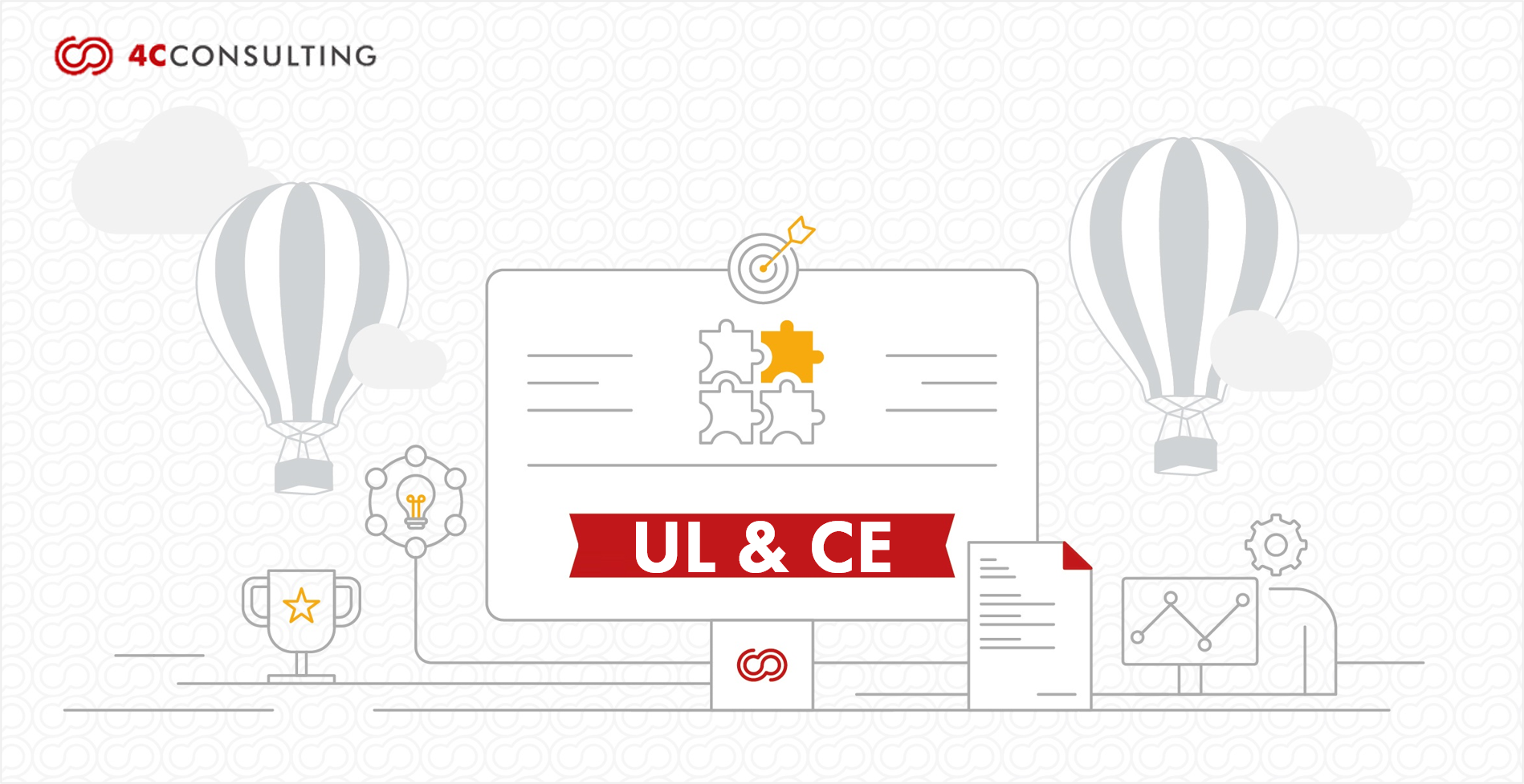
UL and CE Certification: Ensuring Product Safety and Compliance
16th Aug, 2023
In today’s global marketplace, consumer safety and product quality are paramount. Manufacturers and distributors are under immense pressure to meet stringent safety standards and regulatory requirements to gain the trust of consumers and enter international markets. Two certifications that hold significant importance in this context are Underwriters Laboratories (UL) and Conformité Européenne (CE) certification. In this blog, we will explore the significance of UL and CE certifications, their key differences, and how they ensure product safety and compliance.
UL Certification:
UL stands for Underwriters Laboratories, which is an independent organization that provides product testing, certification, and safety standards development services. Founded in 1894, UL is recognized globally and works with manufacturers, retailers, and regulatory authorities to ensure the safety, quality, and sustainability of various products.
UL certification involves a rigorous evaluation process in which products undergo testing, inspection, and auditing to determine if they meet specific safety standards. UL-certified products bear the UL mark, indicating that they have met the required criteria and comply with applicable regulations.
UL certification covers a wide range of industries, including electrical and electronic devices, appliances, industrial equipment, automotive components, and more.
By achieving UL certification, businesses can enhance their brand reputation, gain a competitive advantage, and instill confidence in their products among consumers and partners alike.
CE Marking
The CE marking, which stands for Conformité Européene (European Conformity), is a mandatory conformity marking for certain products placed on the market within the European Economic Area (EEA). The EEA includes the member states of the European Union (EU), as well as Iceland, Liechtenstein, and Norway.
The CE marking indicates that a product meets the essential health, safety, and environmental requirements set out in relevant European directives and regulations. It is not a quality mark but rather a declaration by the manufacturer that the product complies with applicable EU legislation and can be legally sold in the EEA.
The main purpose of the CE marking is to facilitate the free movement of goods within the EEA and to ensure a common level of safety and consumer protection. By harmonizing the requirements for products across the member states, it helps to eliminate trade barriers and promote the Single Market.
Products that require CE marking vary across different sectors and include items such as machinery, electrical equipment, medical devices, toys, construction products, personal protective equipment, and many others.
The specific requirements and procedures for affixing the CE marking depend on the applicable EU directives or regulations that apply to the product.
It is important to note that the CE marking is not a global certification and is specific to the EEA. Other countries and regions may have their own conformity markings or certification requirements.
Key Differences between UL and CE Certification
While both UL and CE certifications focus on product safety, there are fundamental differences between the two:
- Voluntary vs. Mandatory: UL certification is voluntary, and manufacturers can choose to seek it to demonstrate product safety, whereas CE certification is mandatory for products intended to be sold in the EEA.
- Global vs. EU Focused: UL certification is recognized and accepted in various markets worldwide, while CE certification specifically addresses EU market access.
- Third-Party vs. Self-Certification: UL certification involves third-party testing and evaluation conducted by Underwriters Laboratories, whereas CE certification relies on self-assessment by the manufacturer based on applicable EU directives and standards.
- Broad vs. Specific Safety Focus: UL certification encompasses a wide range of product categories and safety standards, while CE certification focuses on the specific requirements of EU directives.
Why UL and CE Certification is important for Global Access?
Obtaining UL and CE certifications can significantly contribute to achieving global market access for your products. These certifications demonstrate compliance with relevant safety and regulatory standards, instilling confidence in your products among consumers and business partners worldwide. Here’s how UL and CE certifications can help you achieve global market access:
- Compliance with Regional Regulations: obtaining these certifications, Organization meets the specific regulatory requirements of specific regions, which opens up opportunities for market entry and acceptance.
- Enhanced Product Credibility: Certification to UL and CE ensures products are gone through rigorous testing, evaluation, and conformity assessment, giving them credibility in the market. This credibility helps establish trust with customers, partners, and regulatory authorities in various countries.
- Expanded Market Opportunities: Many countries outside North America and Europe accept UL and CE certifications as proof of compliance with safety and quality standards.
- Harmonized Standards: UL and CE certifications contribute to standardization and harmonization of product requirements across regions.
- Competitive Advantage: Holding UL and CE certifications can provide a competitive edge over non-certified competitors.
- Streamlined Product Development: By proactively considering UL and CE requirements during product development, you can ensure early compliance and reduce potential delays or redesigns. This approach saves time and costs associated with addressing compliance issues later in the process, enabling quicker entry into multiple markets.
So overall UL and CE certifications play a vital role in achieving global market access. They enhance product credibility, ensure compliance with regional regulations, expand market opportunities, provide a competitive advantage, and streamline product development. By obtaining these certifications, you can navigate regulatory complexities, gain customer trust, and effectively penetrate international markets.
Cost and Timeline for UL and CE Certification
The cost and timeline for UL and CE certification can vary depending on several factors, including the
- Complexity and type of the product,
- applicable standards or directives, and
- any additional Service needed
- Specific requirements of the certification bodies / notified bodies involved. (the typical cost involved conformity assessment fees, testing cost, documentation review and other related expense.)
So, it’s best to contact UL directly or consult with a CE certification body to get an accurate estimate tailored to your specific product. On average, UL certification process can take several weeks to a few months while CE certification may range from a few months to several moths depending on the product and its compliance requirements.
How to Obtain UL and CE Certification
At 4C Consulting Private Limited we have great expertise in terms of consultant, product, facility, process, and system certification to relevant standards and criteria. We can assist you with regulatory gap identification and closure, confirmation of compliance, and certification maintenance. We can help your Organization to achieve both the certification in a very proper way.
Obtaining CE Certification
The Organization who wants to markets their products in the EEA (the European Economic Area is made up of the 28 EU Member States plus the EEA EFTA Countries of Iceland, Lichtenstein, and Norway), must have CE marking. So based on this requirements you must follow certain steps to obtain CE certification. They are as bellow
It is solely Organization’s own obligation as the product’s maker to certify compliance with all regulations. You might need to give your distributors and/or importers all the accompanying documentation once your product has the CE designation.
- Determine the Applicable Directive: Identify the specific EU directive(s) that apply to your product. Each directive outlines the essential requirements and conformity assessment procedures for different product categories.
- Assess Conformity: Conduct a conformity assessment to ensure your product meets the requirements of the applicable directive(s). This involves testing, documentation review, and quality management system evaluation.
- Prepare Technical Documentation: Create a technical file that includes all relevant information about your product’s design, manufacturing, and conformity assessment. This documentation should demonstrate compliance with the directive(s).
- Engage a Notified Body (if required): Certain product categories, such as medical devices or pressure equipment, may require involvement of a notified body—an independent third-party organization designated by EU member states. The notified body assesses the conformity of your product and issues a conformity certificate.
- Affix the CE Marking: Once your product has been verified to comply with the applicable directive(s), affix the CE marking on the product itself, its packaging, or accompanying documents. The CE marking should be visible, legible, and meet specific size requirements.
Obtaining UL Certification
To apply for the UL certification, there are no specific requirements. Applications for this type of accreditation may be submitted by the groups and businesses who are Manufacturers, Product Developers, Authorized Agents, Representatives or Licensees must follow below written points.
- Product Evaluation: Conduct a thorough evaluation of your product’s design, construction, and performance to ensure it meets the applicable UL standards. This evaluation may involve testing, inspection, and certification of specific components or systems.
- Submit Application and Documentation: Complete the necessary application forms and submit the required documentation to UL. This may include product specifications, test reports, circuit diagrams, and other relevant information.
- Testing and Follow-up Services: UL may conduct additional testing and inspections to verify product compliance. They may also provide follow-up services, such as factory inspections and periodic audits, to ensure ongoing compliance with UL standards.
- Receive UL Certification: If your product successfully meets all requirements, UL will issue a certification report or mark indicating compliance. This may involve affixing the UL mark on the product, its packaging, or accompanying documentation.
The specific process and requirements for CE and UL certification may vary depending on the product category, applicable directives/standards, and other factors. So it’s recommended to consult with a qualified Consultant, certification body or agency specializing in these certifications to ensure compliance with all necessary procedures.
How 4C can help your organization in Risk Assessment?
Team 4C has UL & CE Certifications Consultants that will help organizations with product certification in India. we have empowered companies to enhance profitability as well as credibility across the globe. Also, we have provided 30,000+ Man-days Consulting and 20,000+ Hours training and worked with more than 50 International & National Certification Bodies. Contact us now to get your UL & CE certification process started.
